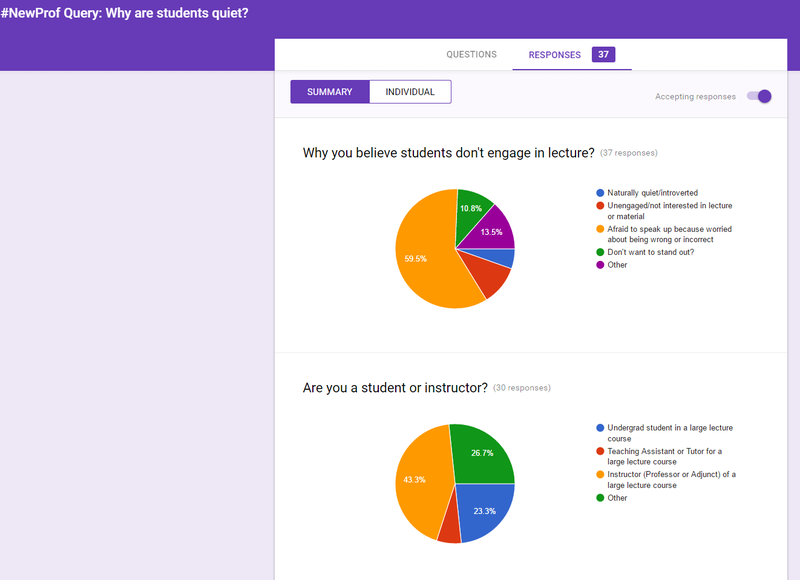This article was published in Scientific American’s former blog network and reflects the views of the author, not necessarily those of Scientific American
On Monday, I asked how I could better engage my undergraduate students in my large lecture hall courses.
I wanted to understand what might be the reasons for this disconnect and get some ideas on how to gage my students' comprehension of the material. When I was an undergrad, I remember how miserable it felt to not understand and fall behind. I always thought it was my responsibility to catch up with where the professor is, that everyone else but me was on track and feeling like I could just rally to fill the gap.
No, I couldn't. And today, I still can't, except the gap is the one between my students and I. I wager other Instructors feel the same.
On supporting science journalism
If you're enjoying this article, consider supporting our award-winning journalism by subscribing. By purchasing a subscription you are helping to ensure the future of impactful stories about the discoveries and ideas shaping our world today.

Credit: DNLEE
click to enlarge
I reached out to the cyber masses to help me understand this issue. I am pleased by the responses. Thank you for your help and your words. I was pleasantly surprised by the participation of actual students letting me know how they feel. Overwhelmingly, based on this officially unofficial imperfectly designed not-scientific survey - student anxiety is my foe to connecting with my students and getting them to engage.
This info solidifies my resolve to use clickers for future big lecture hall classes, but what do I do now?
Thanks to the wisdom of the crowd I got some answers and put the advice/ideas to work immediately in my Tuesday morning (yesterday) class.